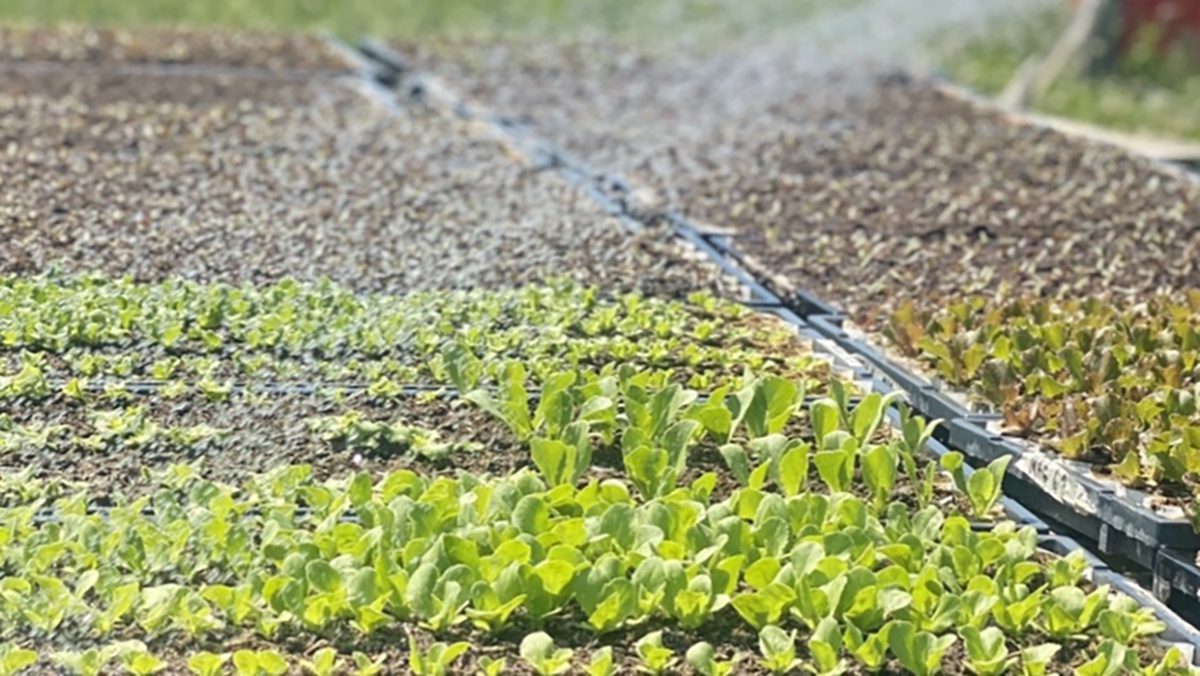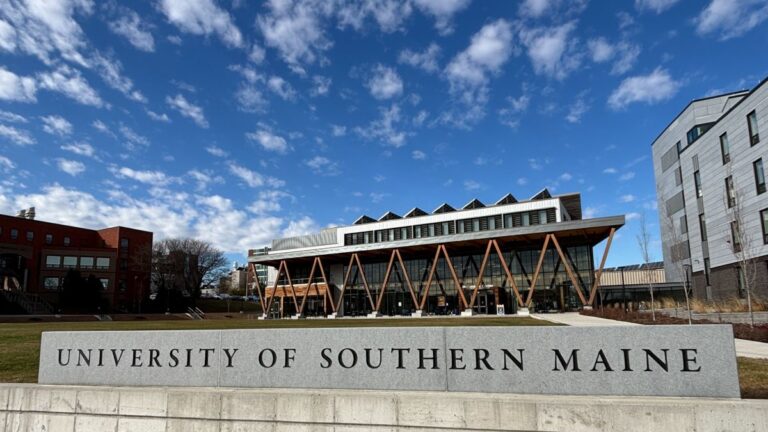The Great Recession gave rise to an innovative model for meeting Maine’s food needs with local resources. The number of residents experiencing hunger had grown markedly by 2010 just as donations of shelf-stable foods declined due to increased efficiencies in the grocery trade.
After importing travel-weary produce from farms out West, Good Shepherd Food Bank attempted to meet the growing demand with supply from struggling Maine farmers. Kristen Miale, who now leads Good Shepherd, recalled that the food bank’s staff then “did something incredibly smart; they approached farmers to ask, ‘How can we design this so it works for you?’”
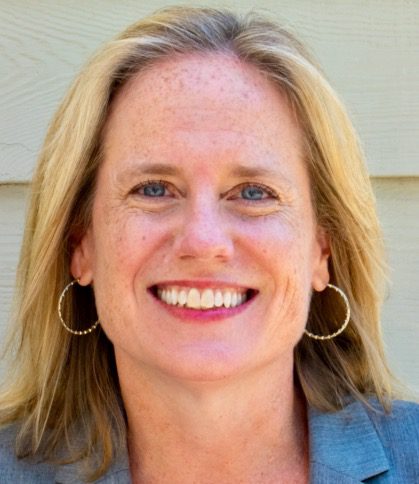
The new program, Mainers Feeding Mainers, informed farmers before the growing season how much the food bank would buy, helping relieve anxiety that supply might exceed demand. It built in flexibility so farmers could make substitutions if they had crop failures.
People warned the food bank that it would never again get donations from farmers after contracting for their produce. But farmers gave surplus generously, Miale said.
From its first season with nine farms, Mainers Feeding Mainers has grown to more than 80 farms, some bringing products directly to Good Shepherd while others deliver food to more than 170 food pantries around Maine.
The partnership has generated benefits all along the food supply chain. Farmers now have a predictable market with built-in flexibility, which was especially welcome when COVID-19 forced restaurants to close. Food transport is minimal, reducing carbon pollution.
Food bank patrons are enjoying more appealing and nutritious food, and are expanding their culinary horizons. Some now seek additional fresh produce through programs like Maine Harvest Bucks at farmers’ markets and Farm Fresh Rewards at smaller grocers, both of which provide bonus local produce for those using SNAP. The federally funded Supplemental Nutrition Assistance Program included 1 in 9 Maine residents as of 2019.
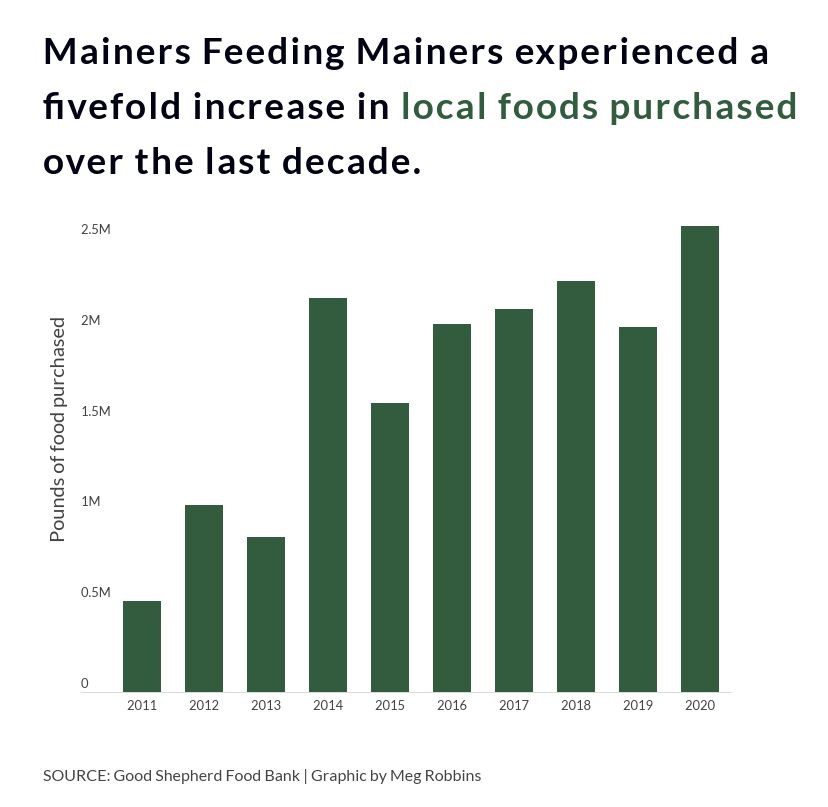
One benefit of Mainers Feeding Mainers caught everyone by surprise. When bushels of fresh produce started appearing at food pantries, they evoked a visceral response, bringing some patrons to tears. So much comes to them second-hand, Miale said, that having beautiful and nutritious custom-grown food sent a powerful message “that someone cared this much about them,” and this goodness was something they deserved.
During the pandemic, Good Shepherd teamed up with the Maine Coast Fishermen’s Association to launch Fishermen Feeding Mainers, which provides “meals for hungry Mainers and a lifeline for Maine’s fishermen,” (many of whom had also lost restaurant business). Charitable gifts allowed the association to pay a fair and predictable price for groundfish that it then donated to schools and food pantries.
Fishermen began “to see how their fish are helping and supporting communities in new ways,” said Jonah Fertig-Burd, a community partner for food systems at the Elmina B. Sewall Foundation in Freeport. “Now they’re exploring what that might look like going forward.”
Shaping a regional food system
Fishermen Feeding Mainers is one of many examples of the “agility of farming and fishing communities” in a crisis – successfully pivoting to online ordering, food deliveries, aggregating products and other adaptations, said Lisa Fernandes, communications director for the Food Solutions New England network based at the University of New Hampshire. This six-state network seeks to advance the goals of a 2014 report called the New England Food Vision (NEFV), which mapped potential paths for how the region might bolster local economies, public health and food resilience by supplying half its own food by 2060.
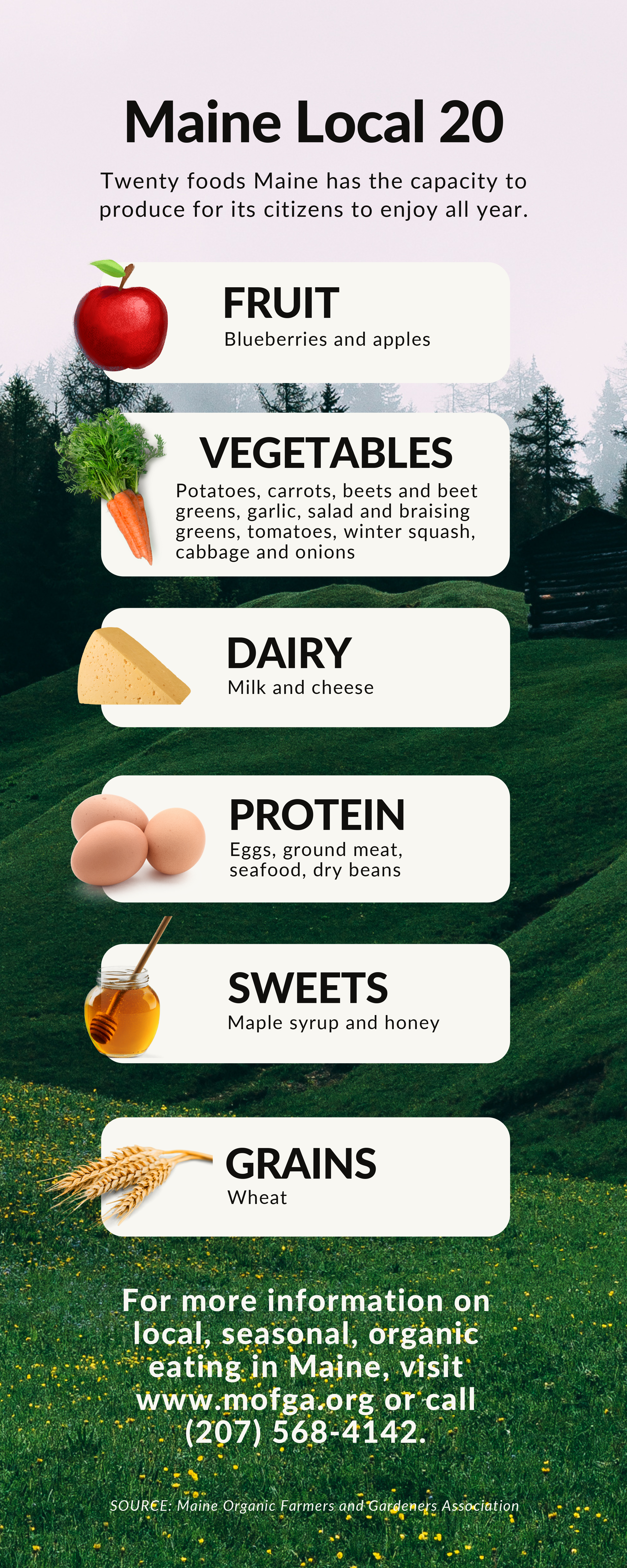
The collaborative process of creating a shared vision “gave us something to pull together toward,” said NEFV co-author Amanda Beal, who now serves as commissioner of the Maine Department of Agriculture, Conservation and Forestry. “We’ve actually moved quite a bit since then.”
Community food councils formed, the Maine Food Strategy took shape and the state’s Climate Action Plan recognized the importance of working farmland protection, climate-smart agricultural practices and the need to “increase the amount of food consumed in Maine from state food producers from 10 percent to 20 percent by 2025 and 30 percent by 2030 through local food system development.”
Those targets are in line with the NEFV, but much in the world has changed since 2014.
“Climate change is moving in an inexorable way and we are not,” said Mark Lapping, a professor emeritus in food policy and planning at the University of Southern Maine and NEFV co-author. The societal context has grown more complex, he added. “I’ve become very concerned, much more so than in the past, about the fracturing of civic culture.”
Lapping is still convinced the region could generate 30 to 40 percent of what it consumes by mid-century, but only “if we get really serious and make appropriate investments.”
A regional vision for food sovereignty provides particular opportunity for Maine, the only state with a large enough land base to produce high volumes of food for itself and the region. Supplying half the region’s foods by 2060 would require quadrupling Maine’s acreage in agricultural production.
Given that roughly 90 percent of Maine is forested, and those trees store atmospheric carbon, provide wildlife habitat, supply timber and support outdoor recreation, careful planning is needed to balance those benefits with increased opportunities for food production, Beal acknowledged. And at a time when Maine should be adding working farmland, it has been losing it.
Creating ‘a guardrail’ for prime farmland
In the five years between 2012 and 2017, Maine lost 10 percent of its farmland, putting it in the top five states nationally for farmland loss, according to federal agricultural census data.
Booming real estate prices, investors acquiring farmland and solar development all represent potential threats to Maine’s agricultural land base, Beal acknowledged, saying “We’re already losing too much farmland to development.”
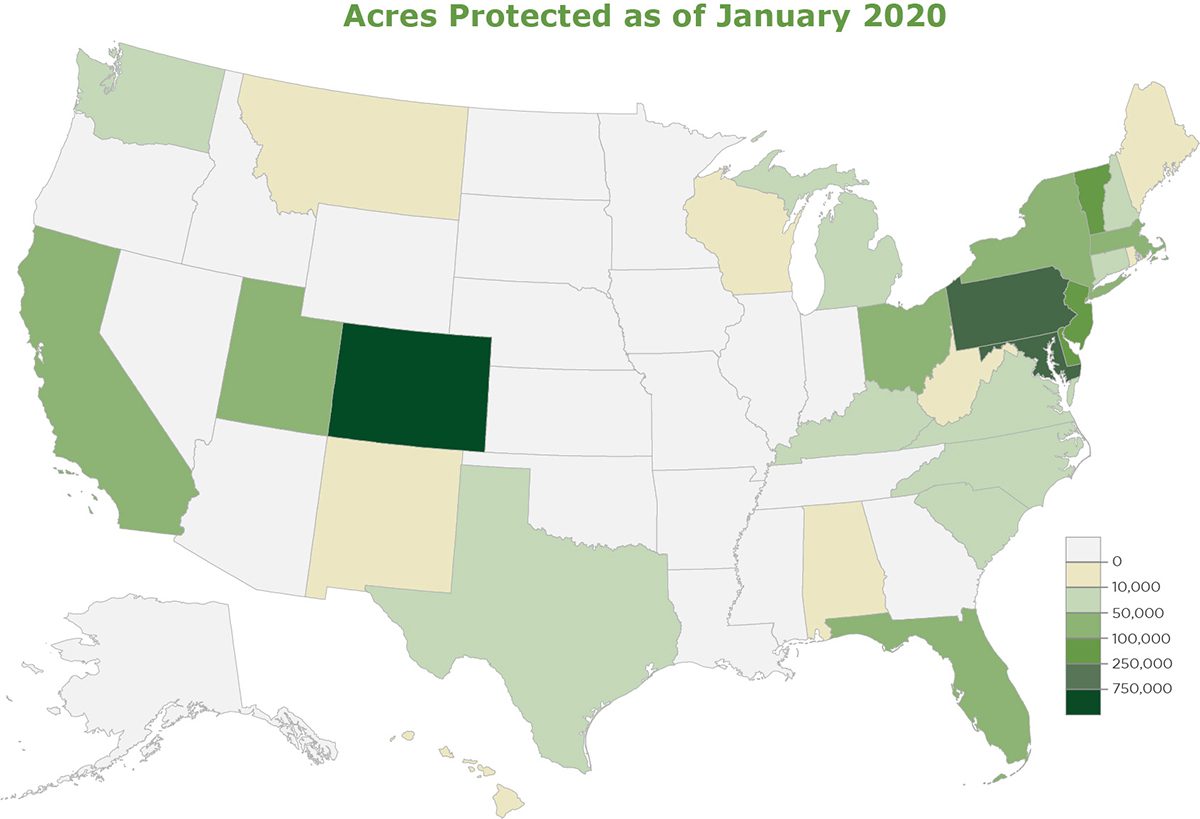
A recommendation from the state’s Climate Action Plan to conserve 30 percent of Maine lands by 2030 could support the purchase of conservation easements on working farms. Maine needs “that kind of guardrail in place,” Beal said.
Maine has not kept pace with other New England states in acquiring easements to protect working farmland. A 2020 scorecard published by American Farmland Trust ranked Maine second-lowest in New England, with just under 10,000 acres protected with state funds. Vermont, which has roughly a quarter of Maine’s land base, has protected 164,000 acres of farmland.
Easements are important “to create equitable land access,” said Ellen Griswold, policy and research director at the nonprofit Maine Farmland Trust, by valuing agricultural lands according to their use and not their development potential. But state support for the purchase of conservation easements has slowed in part because the Land for Maine’s Future Program has not been funded since 2012.
Bills to renew its bond funding are before the Legislature, and if voters approve a bond on the November ballot, project funding would likely be available by the summer of 2022. Another bill (LD 568) this session would dedicate a portion of Land for Maine’s Future funds to working farmland, and would create a Working Farmland Access and Protection Program.
Whether Maine can reach its ambitious targets for local food production “is really dependent on what kind of investment state, federal and other entities make,” Griswold said. Rep. Chellie Pingree plans to reintroduce an “Agricultural Resilience Act” in the House this spring that would – among other measures designed to reduce agriculture’s contribution to greenhouse gas emissions – increase federal funding for the Agricultural Conservation Easement Program and the Local Market Agriculture Program.
Increasing capacity – on many levels
One of the biggest impediments to expanded local food consumption is evident in the Mainers Feeding Mainers program, which is at capacity in terms of the fresh produce it can distribute each season, with a waiting list of farmers.
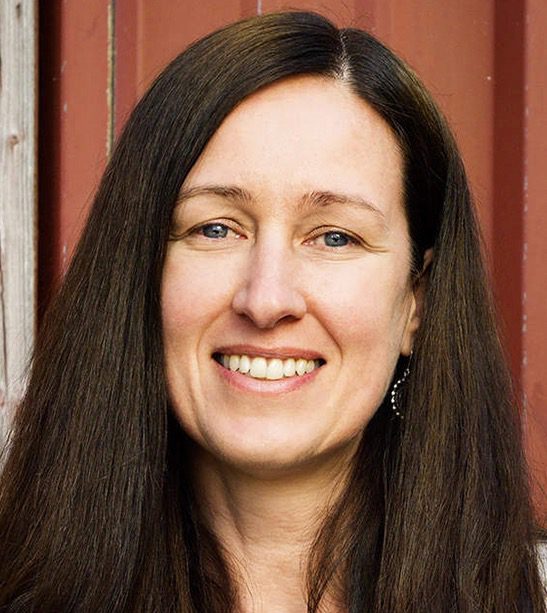
Maine lacks sufficient food processing infrastructure across all agricultural sectors – from meat to vegetables. Good Shepherd is working to change this, collaborating with two blueberry producers, one of which uses its individually quick frozen capacity only six weeks each year. The food bank is launching a for-profit subsidiary that will buy the additional equipment needed to process vegetables (like winter squash and broccoli), and hopes to produce its own brand for food bank use and retail sales by the 2022 growing season. That three-year effort, Miale said, is reliant strictly on private funding.
The state is “looking to rebuild and relocalize infrastructure,” Beal said, not only for processing but for food storage, distribution and the “knowledge base that supports innovation.”
“We’ve seen over the years the erosion of research infrastructure for natural resources, and particularly for agriculture,” Lapping said, as land grant universities stepped back from “programs like plant and soil science. That could leave the region unprepared to assess basic impacts like how climate change might affect the chemistry of regional soils and the presence of pathogens there. It’s a real shame, and something we’ll come to regret.”
The Legislature is considering a bill (LD 437) that would strengthen technical support and assistance to farmers for soil management practices that foster climate resilience. While no funding is attached to the program, it could distribute future federal support – such as a measure included in Pingree’s act that would create a new soil health grant program for states and tribes.
Maine has developed some programs that offer business planning and technical support to farmers, like Farms for the Future, Maine Farmland Trust’s Farming for Wholesale and the Beginning Farmer Resource Network, but there’s a “real need” to expand these efforts, Griswold said.
Aspiring to Vermont’s success
On state scorecards measuring indicators like funding for farmland protection per capita and locavore eating, Vermont typically tops the charts.
“Vermont serves as a model for all of us,” said Heather Spalding, deputy director of Maine Organic Farmers and Gardeners Association, given its “huge commitment at the state scale.”
Vermont recently released its 10-year Agriculture and Food System Strategic Plan, which projects a “public and philanthropic investment” needed over the coming decade of “approximately $9.7 million in one-time funding and $23.3 million in recurring funding.”
Vermont has committed significant state resources for a decade through its Farm to Plate Investment Program, with leadership from a Farm to Plate Network representing, in its words, “farms, food production businesses, specialty food producers, educational institutions, nonprofit organizations, funders, capital providers and government personnel.” Through that sustained effort, the percentage of local food expenditures increased from 5 percent in 2011 to 13.9 percent by 2020.
That modest 9 percent increase over nine years, in a state lauded as a food system leader, signals the major commitment required if Maine is to approach its ambitious target for local food consumption of roughly 20 percent within nine years.
Measuring progress
While the Climate Action Plan cites 10 percent as the current amount of locally sourced foods consumed in Maine, no one can say precisely if that baseline is accurate because, in Fernandes’ words, “the datasets aren’t great.” Commissioner Beal acknowledged that the state needs better metrics and a clear system for tracking progress.
Some institutions have begun measuring their own progress, partly in response to a bill passed in 2018 requiring state institutions to purchase at least 20 percent of their foods from local suppliers by 2025. The University of Maine surpassed its own goal of 20 percent of local foods purchased by 2020 and has committed to reaching 25 percent by 2025.
Household consumers may prove a greater challenge. A 2014 Maine Food Strategy consumer survey found that only 31 percent of respondents said their households spent more than $100 a month on local foods, and less than 1 percent shopped at farmers’ markets or participated in community-supported agriculture or fisheries.
“One of the biggest challenges is awareness about the possibility and potential,” Spalding noted. Having grown accustomed to globally sourced foods, she added, “we need to examine the carbon footprint of our current food system, and promote the healthy, diverse and nutritious diet that we can produce right here in Maine.”
Outreach to consumers might require more innovative approaches, like the Maine Federation of Farmers Markets’ new Bumper Crop Program, which gives businesses a chance to reward employees or support their wellness efforts with vouchers to local farmers’ markets.
The NEFV advocates that regional residents “move toward healthier diets with adequate fresh vegetables, fruits and whole grains as well as more diverse sources of protein.” At present, only 1 in 9 Maine residents eats the recommended daily serving of fruits and vegetables. A 2018 scorecard that assessed each state’s food system in 10 categories awarded Maine’s lowest score for diet and health outcomes.
From public health and hunger to climate and land-use planning, “agriculture is at the intersection of so many important issues,” Griswold said. The pandemic reinforced this recognition, which may prompt a stronger financial commitment to invest in a food system resilient enough to weather supply-chain shocks and climate emergencies.
Making the local food economy work for everyone
Like Vermont, Maine is starting to place a “real focus on cooperation and collaboration,” said Fertig-Burd, citing the example of the recent Maine Food Convergence in which more than 200 people engaged in extended discussion of how to collectively create an equitable, just and regenerative food system in Maine.
“There’s a growing understanding of the intersectionality of food, economics and racial justice,” said Fertig-Burd, with issues of food security and food access bound up with race, living wages, affordable housing and transportation. Areas traditionally labeled food deserts are more aptly examples of food apartheid, he added, “a system designed to deny people access to food and economic opportunity.”
“We need a whole lot of change,” Lapping said, from increased consideration of food justice and preventative health to addressing the root causes of hunger. “I’ve come to believe more in the concept of a Universal Basic Income,” he added, convinced that one thing “we can do to help people eat fresh, nutritious, local foods is to guarantee a minimum income to live with dignity and have some degree of sovereignty over their food choices.”
With the state’s intertwined commitments – to end hunger, boost consumption of local foods and conserve markedly more Maine land by 2030, there are many “bigger picture conversations happening,” Beal said. “(It’s) absolutely a priority that we do this work now.”


